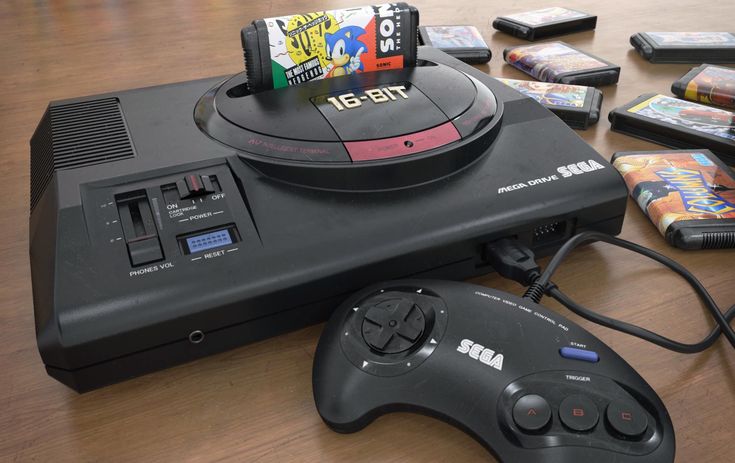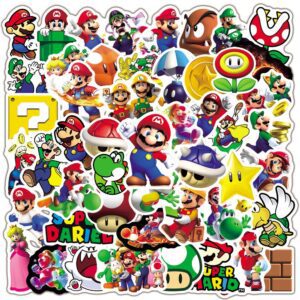The Sega Mega Drive/Genesis console, released in 1988, is an iconic piece of video game history that revolutionized the gaming industry. Developed by Sega, the console quickly became a bestseller and popularized video games worldwide. The console introduced many of the features that gamers take for granted today, such as multiplayer gaming and improved graphics. In this article, we will take a retrospective look at the Sega Mega Drive/Genesis console, providing an overview of its design, history, reception, sales figures, games, and final review. Join us as we explore this groundbreaking console and delve into the world of gaming history like never before!
Console Overview
The Sega Mega Drive/Genesis console was first released in the late ’80s, and it quickly became a popular gaming system. The console’s design was sleek and modern, featuring a smooth plastic exterior and a charming red and white colour scheme. In terms of its technical features, the console was quite impressive for its time, boasting a 16-bit processor and 512 kilobytes of RAM.
Over the years, there were several iterations of the console, each building upon the design and functionality of the original. The Mega Drive II, for example, was a slightly smaller and more compact version of the original console, while the Sega CD added the ability to play games on CDs. Another notable iteration was the Sega Genesis 3, which was the smallest and least expensive version of the console.
In addition to the different iterations of the console, there were also various peripherals released that enhanced the gaming experience. One of the most popular of these was the Sega Mega-CD, which allowed gamers to play games on CDs and also featured additional memory and a faster processor. Other peripherals included the Sega 32X, which enabled gamers to play 32-bit games, and the Sega Power Base Converter, which allowed gamers to play Master System games on the Mega Drive/Genesis console.
Overall, the Sega Mega Drive/Genesis console was an impressive gaming system that remains popular among gamers to this day. Its sleek design, powerful technical capabilities, and various peripherals all contributed to its enduring legacy within the gaming industry.
History
The Sega Mega Drive/Genesis was a video game console released in 1988 by Sega. The console was developed as a response to the hugely successful Nintendo Entertainment System (NES), which dominated the video game market at the time. Sega wanted to establish themselves as a leader in the gaming industry and saw launching a new console as the best way to do so.
The decision to release the Sega Mega Drive/Genesis was initially shrouded in controversy. Sega’s top executives were initially hesitant to take the risk of investing a substantial amount of money in a new console, especially considering the dominance of the NES. However, in the end, they felt a new console was necessary to remain competitive in a rapidly-evolving industry.
The Sega Mega Drive/Genesis was initially released in Japan and then later brought to North America and Europe. The console was marketed as a superior alternative to the NES, with improved graphics, sound, and gameplay. The console was received positively by the gaming community and helped Sega establish themselves as a viable contender in the gaming industry.
The console’s development and production was arduous, with several different iterations of the console being developed over the course of its lifespan. The hardware was constantly being improved, and new peripherals were frequently released to expand the capabilities of the console. Despite being discontinued in the late 90s, the console has remained an iconic and beloved part of video game history.
The Sega Mega Drive/Genesis Console: Reception and Sales
The Sega Mega Drive/Genesis console was released in 1988 and instantly caught the attention of gamers worldwide. The console featured vivid graphics, a unique design and a library of exciting games that captivated gamers of all ages and backgrounds. This section will explore the reception and sales of the console, giving readers a comprehensive understanding of the console’s popularity and impact within the video gaming industry.
Upon release, the Sega Mega Drive/Genesis was met with enthusiastic reviews from critics and gamers alike. The console’s unique design and capabilities, coupled with the availability of popular games like Sonic the Hedgehog and Golden Axe, made it an instant hit among gamers. While it faced stiff competition from the Nintendo Entertainment System (NES) at the time, the Mega Drive/Genesis offered a fresh alternative for gamers.
The console’s success can also be seen in its sales figures. Over its lifespan, the Mega Drive/Genesis sold over 30 million units worldwide, making it one of the best-selling consoles of its generation. Its sales numbers may not have surpassed that of the NES, but the console’s impressive sales figures cannot be ignored. In short, the Mega Drive/Genesis was a major player in the video gaming industry during its time.
The lasting impact of the Sega Mega Drive/Genesis can still be seen in the gaming industry today. The console was one of the pioneers of the 16-bit era, introducing gamers to a new level of gameplay and graphics quality. Its success paved the way for future consoles like the PlayStation and Xbox, who all owe a debt of gratitude to Sega and the Mega Drive/Genesis for breaking new ground within the industry.
Games
When it comes to the Sega Mega Drive/Genesis console, there is no shortage of great games to play. From platformers to RPGs, this console had something for everyone. Below are some of the most popular and influential games for the console.
- Sonic the Hedgehog
- One of the most iconic games of all time, featuring the Sega mascot, Sonic
- A fast-paced platformer with beautiful graphics and memorable music
- Known for its speed and challenging level design
- Streets of Rage 2
- A classic beat-em-up game featuring four playable characters
- Known for its tight controls, great soundtrack, and challenging difficulty
- Considered one of the best games in the genre
Phantasy Star IV: The End of the Millennium
- A standout RPG featuring deep storytelling, great characters, and a unique sci-fi setting
- Known for its turn-based combat system and well-balanced difficulty
- Considered by many to be one of the best RPGs of all time
The Sega Mega Drive/Genesis also had a diverse lineup of games, including sports games, puzzle games, and arcade classics. Some of the most well-known genres represented on the console include:
- Platformers, such as Aladdin, Earthworm Jim, and Vectorman
- Fighting games, such as Mortal Kombat and Street Fighter II
- Shooters, such as Contra: Hard Corps and Thunder Force IV
- RPGs, such as Shining Force II and Phantasy Star III: Generations of Doom
Overall, the Sega Mega Drive/Genesis had an impressive library of games that helped cement its legacy in the gaming world. From Sonic the Hedgehog to Phantasy Star IV, this console truly had something for every type of gamer.
Sega Mega Drive/Genesis (1988) Retrospective: Conclusion
As we come to the end of our Sega Mega Drive/Genesis retrospective, it’s clear that this console has left a lasting impact on the gaming industry. From its innovative design and convenient peripherals to its impressive list of influential games, the Sega Mega Drive/Genesis is truly a console to remember.
When it comes to its strengths, the console’s versatility and robust library of games stand out. It was a console that could appeal to a wide variety of gamers, from those looking for arcade-style beat-em-ups to racing games, and many genres in between. Additionally, its marketing strategies, particularly with Sonic the Hedgehog, were both memorable and effective.
However, the console was not without its faults. Its music and sound capabilities could not compete with its rivals, and some of the peripherals designed, like the Sega CD, were not always successful. Despite being groundbreaking at the time, many of its features may not translate as well to modern gaming audiences as well as other consoles have.
All in all, we believe that the Sega Mega Drive/Genesis is a console worth experiencing if you are a gamer interested in video game history or retro gaming. Its influence is still felt today, and it’s fascinating to see where gaming has come from. If you can get your hands on one in good condition, it’s definitely worth checking out.
FAQ
-
What is the Sega Mega Drive/Genesis console?
The Sega Mega Drive/Genesis is a 16-bit home video game console developed and produced by Sega. It was first released in Japan in 1988 and later introduced to North America in 1989.
-
What are some of the most popular and influential games for the console?
Some of the most popular and influential games for the console include Sonic the Hedgehog, Streets of Rage, Phantasy Star IV, and Shining Force.
-
What were the different iterations of the console?
The Sega Mega Drive/Genesis had three major iterations – the original model, the Sega Genesis 2, and the Sega Genesis 3. Additionally, Sega released various add-ons and peripherals including the Sega CD, the 32X, and the Power Base Converter.
-
How was the console received and what were the sales figures?
The console was well-received upon release, particularly in North America where it became a major competitor to the Nintendo Entertainment System (NES). The console sold over 30 million units worldwide, which was a significant achievement for a non-Nintendo console at the time.
-
What is the lasting impact of the Sega Mega Drive/Genesis within the gaming industry?
The Sega Mega Drive/Genesis was a major player in the 16-bit era of video game consoles, and its impact can still be felt today. Many classic games from the console have been re-released on modern platforms, and the console’s legacy has influenced the development of subsequent consoles.













